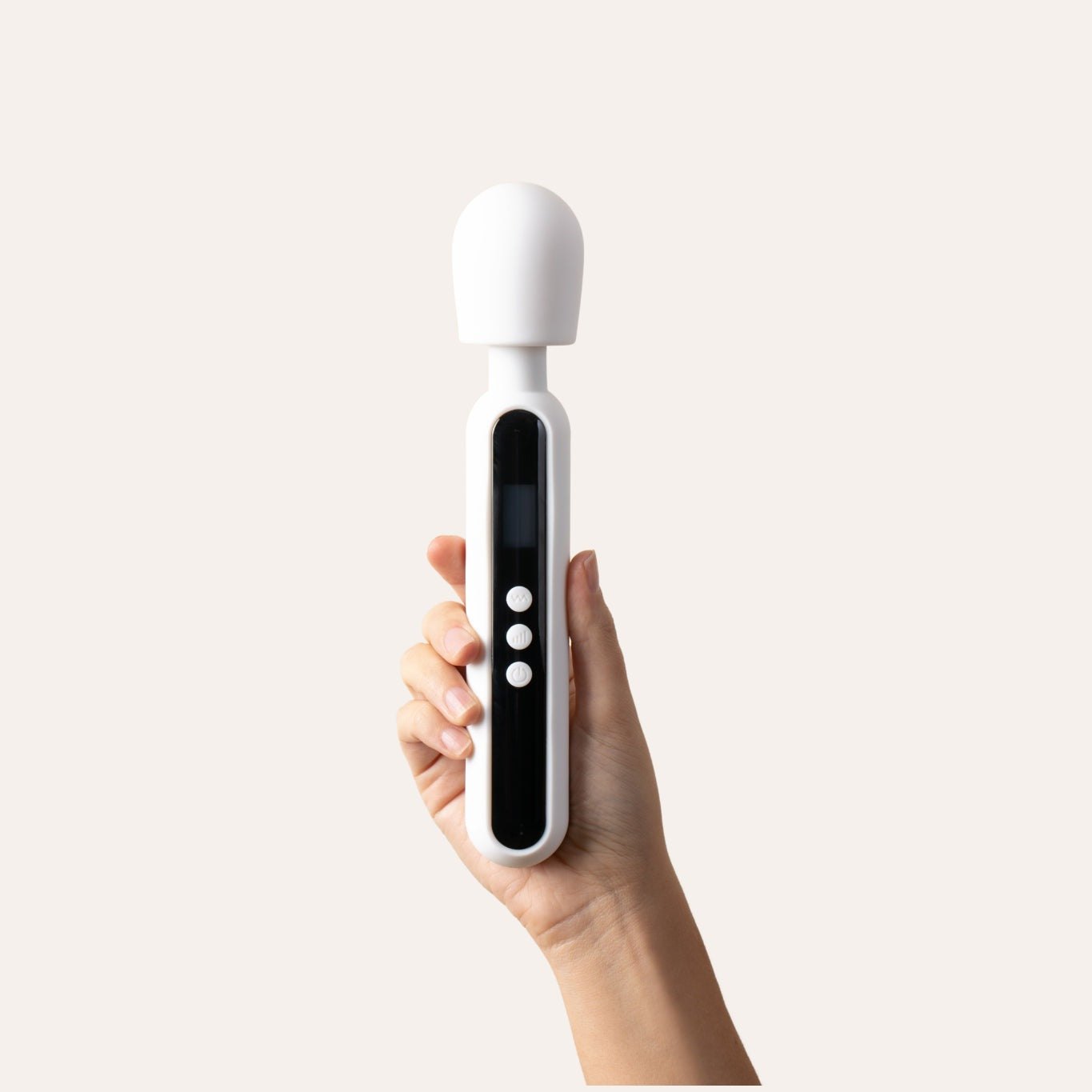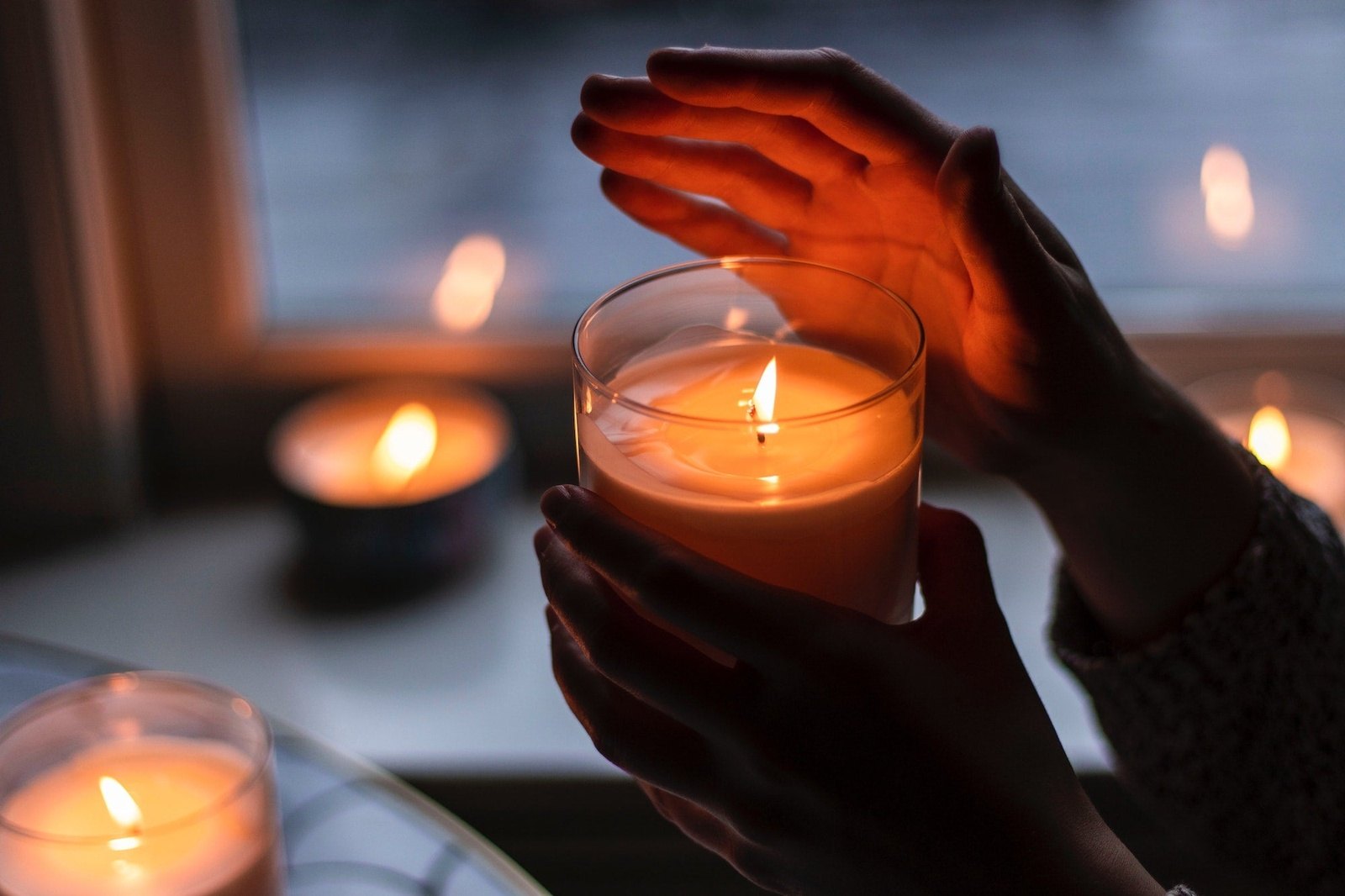Once upon a time, you could buy a home fragrance or a body care product and you wouldn’t have to worry about toxin content.
But those days are over. We know better now.
Over the last few years, there's been lots of talk about toxins. Toxins in our air, water, veggies, perfumes, shampoos, and even our beloved candles.
And it's true, there are definitely some toxic candles you really don’t want to burn in your home. In fact, you want to be especially thoughtful when you buy a candle as much of the candle industry doesn’t adhere to any ethical or ingredient standards.
But navigating a non-toxic movement, fueled by increasing consumer awareness, can be really overwhelming for a person.
What is actually toxic when it comes to candles?
Well, in this article, we’d guide you through everything you should know about truly non-toxic candles and what to look out for.
(We're also spilling some industry secrets.)
Caution: You breathe what you burn
You may be thinking – “Well I’m not eating my candles, why does this all really matter?”
When you burn a candle of any type, the candle wax, fragrance oils, and some components of the candle wick evaporate into the air you breathe. This in and of itself isn’t dangerous – so long as the candle ingredients are non-toxic.
When it comes to candle production there are no regulations. This means manufacturers can use any necessary means to create a cheap (and insanely profitable) aromatic candle. These companies often opt for 100% paraffin wax which is dirt cheap and less dense than natural waxes which offers an intense scent throw.
But, when you burn paraffin you inhale the toxic carcinogenic chemicals (along with your favorite scrumptious sugar cookie scent).
Some candle wicks are made of lead
Yeah, LEAD! There might be lead in your candle wicks.
Despite the 2003 lead wick ban, the EPA has found wicks containing lead in around 8% of candles. These lead wicks were 39% to 74% lead. Prior to that in 1999 almost 40% of candles contained a lead wick.
This practice is likely to still happening still due to import and low product restriction. Other countries don’t have to adhere to this wick legislation. U.S. companies import cheap candles for resale without running safety tests.
To avoid this, opt for candles that are made here in the U.S. in small batches (our candles are all handcrafted). This type of craftsmanship often ensures maker control of the vessel, wick, wax, additives, fragrance, and fragrance: wax ratio.
Then, you just have to be sure the makers are making good decisions…
The dangers of paraffin wax: the most prevalent toxin in candles
A 2009 study conducted by South Carolina State University found when paraffin candles are burned, a natural combustion reaction caused a release of toxic chemicals such as toluene and formaldehyde. Both are known cancer causing toxins.
The study compared paraffin candles to natural soy candles and found that soy candles did not emit any toxic chemicals into the air.
Researchers reported, “Petroleum-based candles produced various alkanes, alkenes, toluene, benzene (a carcinogen) and some other chemicals whereas the soybean candle was completely clean.”
Burning paraffin candles commonly cause headaches, nausea, and respiratory problems.
Paraffin is an oil industry byproduct
In the 1850s scientists discovered they could create a cost-effective wax from the waste byproduct of the crude oil industry. Paraffin is made from petroleum, coal, and oil shale.
As far as toxin emission and unsustainable products go, paraffin wax candles take the cake.
Some candlemakers often shrug this off to enhance hot throw and profits
Even though the toxic nature of paraffin is well-known and well-studied, both independent and corporate-giant candle makers use it every day (not us though).
These folks choose paraffin for a few reasons:
1 Profit margins.
Paraffin is extremely cheap, making for massive profits. Natural waxes like coconut wax, beeswax or apricot wax are not cheap! They're natural but not cheap.
2 Paraffin burns hot and fast, which means you buy more.
Soy candles burn far cooler than paraffin which results in 30% to 50% longer burn times. You get a better bang for your buck with soy.
3 Hot throw!
Candlemakers get frustrated when their candles smell like nothing, so they add paraffin to compensate. Paraffin is not as dense as soy so fragrance is released easier.
4 Simple making process.
The thin nature of the oil requires no skill to create a smelly candle. Which makes it great for mass production. Soy, beeswax, and coconut wax all require a stringent and exact making process.
And that is despite the danger paraffin pose to their customers and the environmental impact.
(Oh man, is there a heated debate within the candle making community about this.)
Fun fact: "all natural" could mean only 95% natural
Okay so if we're splitting hairs -- an all natural candle might only mean it's 95% natural.
Some folks try to use just a bit of paraffin (5%) to enhance hot throw, but keep things "natural". This is commonly called a parasoy wax which is a mixture of soy and paraffin wax (very common).
But for non-toxic purposes, it's best to go with 100% pure soy.
Phthalates are the other toxic candle problem
Long story short – Phthalates have been found to be potentially hormone-disrupting and associated with numerous reproductive health and developmental problems.
Phthalates are often found in cosmetics, fragrances, soaps, plastic piping, pharmaceuticals, nail polish, hair sprays, plastic toys, and lubricating oils. When it comes to candles, phthalates are found in many fragrance oils and used as fixatives and solvents.
But phthalates are hard to avoid. They are in nearly everything we encounter on a daily basis, but there aren’t many studies on their effect on humans.
When you burn BerryLemon candles though, you don’t have to worry about paraffin, petroleum, phthalates, or parabens.
What to look for in a truly non-toxic candle
Here is your non-toxic candle buyers guide. This is what you should look for in a non-toxic candle.
100% natural wax:
Opt for as pure a wax as you can. And avoid paraffin. Period. The cleanest waxes are pure soy and pure beeswax.
Paraffin wax is not normally listed as such, but you can easily spot it. Paraffin nearly translucent vs. flat opaque white.
When candles say “soy blend” ask the company what they are blending with. (Often, it’s a bit of paraffin wax.)
Our favorite clean candles are 100% pure soy wax made from soybeans grown in the United States. Soy offers a great slow burn, great hot throw (easily filling a room with scent), and is 100% non-toxic.
All-natural cotton wicks:
As we said before, some candle wicks contain lead. LEAD! Despite the 2003 lead wick ban, the EPA has found lead in candle wicks.
To be sure you’re buying a non-toxic candle opt for cotton wicks.
At BerryLemon we use an all-natural braided cotton wick with paper threads for a reinforced wick and consistent burn.
NO phthalates in fragrance blends:
If a candle is non-toxic it will say so. Companies that avoid language like “vegan, paraben-free, phthalates free” etc, do so because they AREN’T free of those things. If they were, believe me it would be their calling card.
At BerryLemon all of our fragrance blends are created with phthalates fragrance oils.
Tricks for spotting toxic candles
Staying away from toxic candles and finding the truly non-toxic options can be tricky – here are some tips that may help you out.
Pure natural waxes often have a textured surface after the first burn:
A hallmark sign of 100% pure soy wax is a textured surface after you’ve burned it. This may look like wrinkles, divots, or bumps in the wax.

This does not affect the candle burn at all, it's just a feature to natural wax. Its caused by the rate the wax cools off. It doesn’t always happen though with natural candles though, so this is not a hard and fast rule.
Spotting paraffin:
When a candle is made of a lot of paraffin wax it will look almost opalescent. Look for a translucence to the wax. Paraffin is often white, but slightly translucent.

This is easy to spot when the candle is 100% paraffin and harder when makers use a blend. 100% soy is opaque (no translucence).
When a candle uses a wax “blend”:
When the wax is listed as a soy blend or coconut wax blend, ask the company if they can share what it's blended with. Ask if they use paraffin, petroleum, or, vybar.
Some companies won’t share this information as it may be proprietary -- and they aren’t required to. If you run into issues, opt for 100% pure natural wax candles, us pure soy candle makers are out there.
Our top 4 favorite non-toxic candles
We’re a bit obsessed when it comes to non-toxic candles – at BerryLemon we’ve painstakingly hand-crafted a varied collection of non-toxic soy candles. Each competent of the candle creation has been overseen by in-house expert makers to ensure a non-toxic, clean burning candle.
(But shoutout to our fellow faves like Nightshift Candle Co. and Simply Curated.)
All BerryLemon candles are made in our little studio in St. Pete, Florida in small batches.
Our candles are vegan, made with 100% pure soy wax, and are always paraffin-free, phthalate-free, paraben-free, cruelty-free, and lead-free.
ALL of our candles are non-toxic but here are some of our top faves:
#1 Sugared Lemon Zest - Fresh & Sweet - Pure Soy - Non-Toxic Candle
Our lemon candle smells like your grandmother is baking lemon bars in your kitchen. It's fresh, lemony, and sweet with notes of brown caramelized butter, brown sugar, and honeycomb.
If you love a fresh and sweet candle - this one is the one for you.

#2 Beachside - Beachy & Fresh - Pure Soy - Non-Toxic Candle
This really is a beach day in a candle. Perfect for those who enjoy a fresh sea breeze. This candle has notes of ozone, coconut, sea salt, delicate freesia, tonka bean, and sandalwood.
#3 True Rose - Bright & Floral - Pure Soy - Non-Toxic Candle
Step into a late summer garden in full bloom. This sophisticated scent is a bright and timeless scent- garden roses, with added earthy notes of geranium, lily of the valley, and ylang-ylang. This fragrance is grounded with notes of oakwood and roasted vanilla.
If you love fresh & floral (my personal favorite) then you'll love this rose candle.
#4 Common Grounds - Sweet Coffee - Pure Soy - Non-Toxic Candles
Do you want your office to smell like fresh, sweet, spiced coffee all day long? Burn Common Grounds. This is a gourmand scent (edible smelling) that balances the striking scent of espresso, and the warmth of cinnamon and brown sugar.
Perfect for any coffee lover who wants to enjoy the scent of a coffee ritual anytime, anywhere.
Non-toxic candles ARE out there
While it may feel complicated to find clean candles to burn in your home, us non-toxic candle makers ARE out there.
While many makers opt for cheaper and lighter waxes like paraffin, despite the dangers, there are many of us who love using natural soy waxes.
There are a lot of benefits to using soy wax other than the clean burning features. We talk all about soy wax in this blog article, if you want to know more.
Want a candle discount? Sign up below
We send smell-good emails all about the art of fragrance.
We ONLY send discounts to our smell-good email list.
Get 10% off your first candle order when you sign up plus free shipping.












